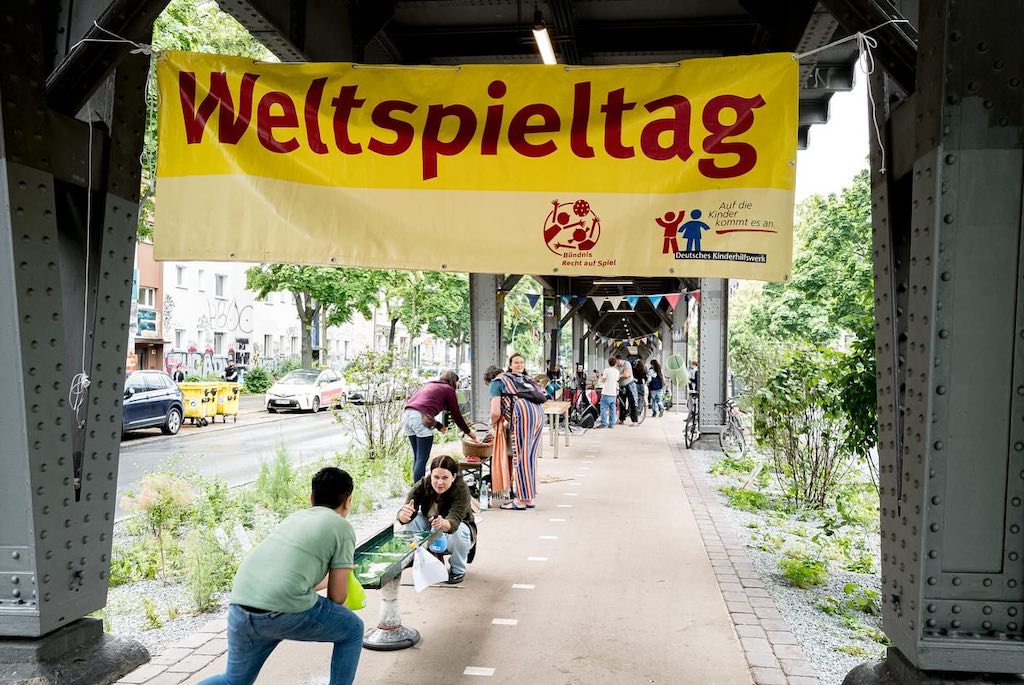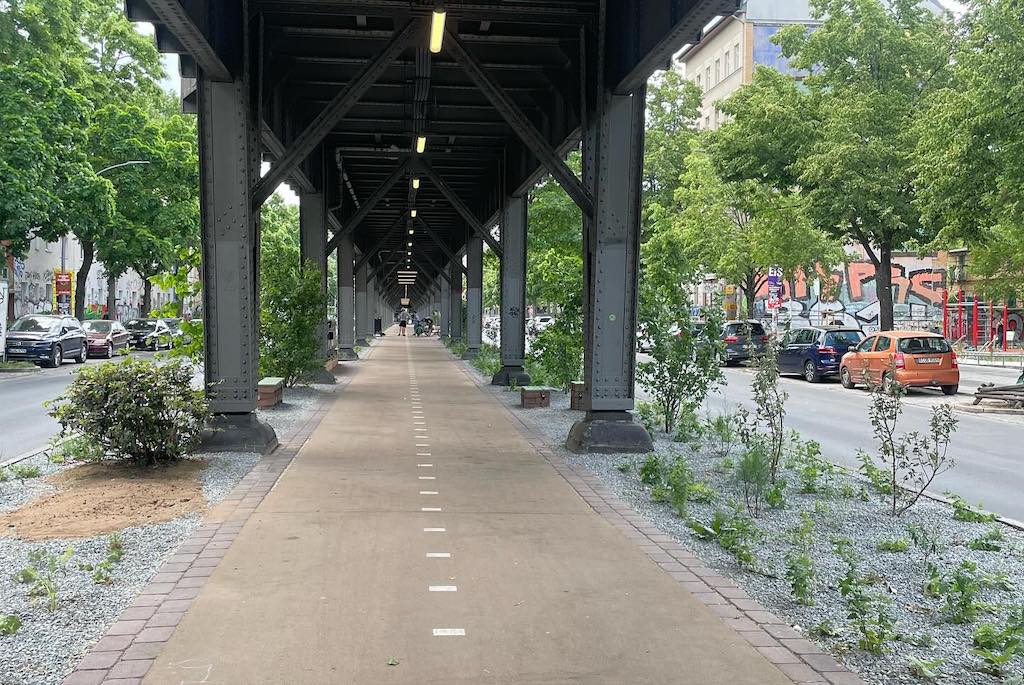Autumn Gear Guide
Find inspiration in our Gear Guide that will keep you out on your bike through wind or rain.
Download NowUrban spaces worldwide are undergoing a transformation, as cities repurpose underutilized infrastructure to create vibrant, sustainable environments. From Miami’s Underline, which is turning the space beneath the Metrorail into a 10-mile linear park, to Toronto’s Bentway, a dynamic public space beneath the Gardiner Expressway, cities are finding innovative ways to reclaim and rejuvenate forgotten areas. […]
Urban spaces worldwide are undergoing a transformation, as cities repurpose underutilized infrastructure to create vibrant, sustainable environments. From Miami’s Underline, which is turning the space beneath the Metrorail into a 10-mile linear park, to Toronto’s Bentway, a dynamic public space beneath the Gardiner Expressway, cities are finding innovative ways to reclaim and rejuvenate forgotten areas. Berlin has joined this movement with the Radbahn, which has been dubbed a real-world cycle track laboratory since it opened this past spring. Nestled under the historic U1 viaduct on Skalitzer Strasse between Mariannenstrasse and Oranienstrasse, this project is set to redefine urban sustainability and community engagement in the German capital.
Since its opening, the Radbahn project has become a vibrant hub of urban life, blending ecological innovation with community-driven design. As summer unfolds, the impact of this initiative on Berlin’s urban landscape is becoming increasingly evident. The Radbahn cycle track project, a 200-meter-long stretch under the U1 viaduct, stands as a testament to sustainable urban development, showcasing what is possible when cities reimagine and repurpose their infrastructure. Originally conceived by the think tank paper planes eV in 2015 and brought to life in 2019 through the National Urban Development Projects, this initiative has transformed an underutilized area into a flourishing green space, offering both aesthetic and environmental benefits.
The Radbahn project is all about using the space under and along the historic U1 subway line viaduct to create a unique urban bike path. This nine-kilometer path runs from Bahnhof Zoo to Oberbaumbrücke, protected from the elements and designed for various uses, catering to the diverse needs of Berlin’s residents.
Cities are constantly evolving, and they make great labs for new ideas. But as we chase technological progress, we’ve sometimes lost touch with our environment, our neighbors, and even ourselves. Public spaces can feel isolating, with people zooming by in cars or on scooters and bikes, rarely stopping to interact. The Radbahn aims to change that by promoting a more mindful way of getting around that encourages human connection.
The Radbahn idea, born in 2014, envisioned breathing new life into the space under the U1 viaduct. It’s not just a bike path; it’s an urban space designed to meet the urgent needs for sustainable transport and development. The Radbahn offers a place where people can slow down and enjoy their surroundings, fostering a sense of community in the heart of the city.
From the start, the Radbahn project has been about community involvement. The team gathered ideas and feedback from local residents and stakeholders to shape the space. This collaborative approach has helped create a functional and beloved area that reflects the community’s needs and desires.

Radbahn cycle track
Since opening, the Radbahn cycle track project has been in a testing phase, inviting citizens to explore and use the space. This experimentation period, which runs until June 15, 2024, has been crucial for gathering feedback on various elements of the redesign. Surveys have helped project organizers understand how the new urban space is being received and which features are most popular or underutilized. This data will be invaluable in shaping future urban development projects in Berlin and beyond.
“The core question will be how different groups use, perceive and assess our test site,” said Architect Matthias Heskamp, managing director of the Reallabor Radbahn company, in an interview with Smart City Berlin. “After all the brainstorming workshops we did ahead of the project we are hoping for a factual, empiric foundation that evaluates the results and will allow us to draw up suggestions for the project’s further development.”
On June 29, the “Tag der Architektur” (Day of Architecture) saw guided tours of the Radbahn test site under the U1 viaduct. The event highlighted the Radbahn’s role in shaping sustainable urban development and offered a closer look at the transformation of this previously under-utilized space.
Looking ahead, a light installation by the artist duo SKIA Studio is scheduled to illuminate the space under the viaduct daily from sunset to midnight starting September 30. This installation will visually trace the path of the future Radbahn, using horizontally running light tracks to symbolize the dynamic flow of cyclists. The light installation will not only enhance the aesthetic appeal of the area but also serve as a reminder of the lively, continuous movement that the Radbahn aims to foster.

Radbahn cycle track
The Radbahn cycle track exemplifies what is possible when innovative design meets community engagement. By transforming an abandoned space into a thriving urban oasis, the project offers a model for other cities looking to implement sustainable urban development initiatives. The green verges, advanced water treatment systems, and innovative street furniture all contribute to a more livable and climate-friendly urban environment.
As the Radbahn project moves beyond its initial test phase, its impact on Berlin’s urban landscape continues to grow. The feedback gathered during the test phase will help refine and improve the space, ensuring that it meets the needs of the community. The project’s success also paves the way for similar initiatives in other parts of the city, promoting a more sustainable and community-focused approach to urban development.
“With the construction of the test site we have now reached a huge milestone,” Heskamp said. “And at this point, one thing is already manifest: when it comes to redesigning space, we need to think big. Both spatially and in terms of the diversity of its use, as was revealed by comments during the participation process, a potential and risk analysis we commissioned and the results of a study on traffic commissioned by the senate department. The latter even considers taking away two road traffic lanes and creating a redesign concept that combines them with the space beneath the viaduct.”
The Radbahn project is more than just a cycle track; it is a symbol of what is possible when communities come together to reimagine and revitalize their urban spaces. As Berlin continues to evolve, the Radbahn project stands as a shining example of innovation, sustainability, and community spirit, offering a blueprint for the cities of the future.
Find inspiration in our Gear Guide that will keep you out on your bike through wind or rain.
Download Now
Leave a comment